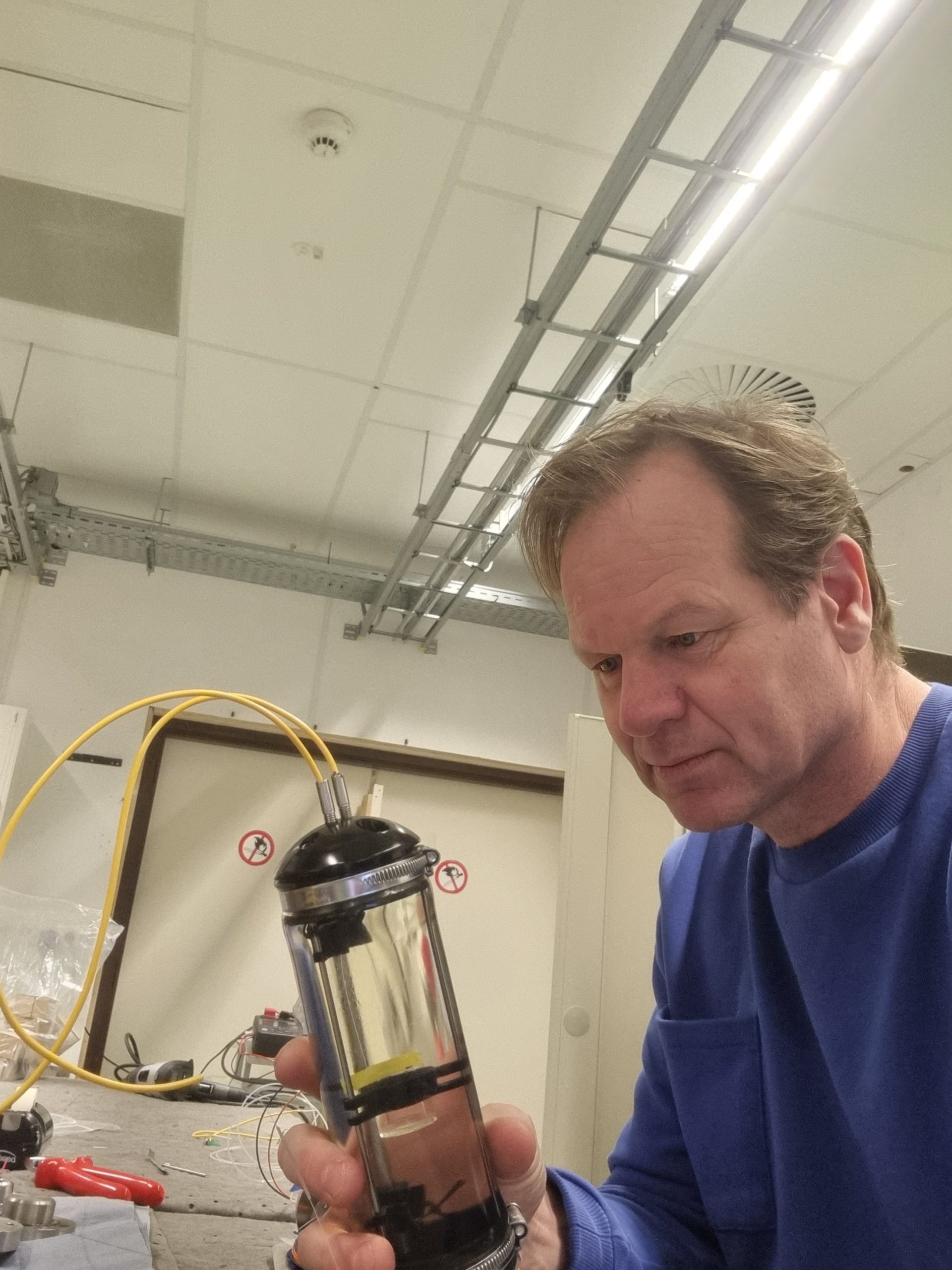Neutrinos are elementary particles that are almost impossible to capture. But when they collide, they do make a sound. With an NWO-grant Nikhef researcher Ernst-Jan Buis is going to measure this in the sea.

This week, NWO approved a project proposal for the completion of the KM3NeT neutrino detector on the bottom of the Mediterranean Sea. A network of light sensors capable of detecting particle impacts is being built kilometres below the surface near Toulon.
A special part of the proposal is a remarkable brainchild of former TNO researcher and now Nikhef staff member Ernst-Jan Buis. He wants to use special microphones to listen to incoming neutrinos, rather than watching them.
Neutrinos are elementary particles with almost ghostly properties. They have virtually no mass and hardly interact with ordinary matter, which means they can easily fly right through the earth. Physicists still have many questions about the particles themselves, for example about their masses; moreover, their sources in the universe are not yet well understood.
That listening to particles is an option is already a certainty. In the 1970s, Russian researchers calculated that an extremely high-energy ghost particle causes water to boil very locally. This produces a shock wave that should be measurable as sound. This has already been successfully demonstrated in the laboratory and in a swimming pool, including by Buis.
To this end, in a collaboration between Nikhef and TNO, he developed a new type of underwater microphone that will in principle be simpler, less fragile and, above all, less expensive than conventional electronic hydrophones. The principle behind the new optical hydrophones is based on a glass fibre that is deformed by sound and therefore transmits laser light with a measurable wavelength shift.
Buis has been experimenting with prototypes of the system in recent years and has concluded that they will be able to pick up sound perfectly in the right wavelength range. The idea is to place thousands of microphones over a large area and combine the signals to see particle tracks.
But those were lab tests. Now, says Buis, there is finally money to test the idea on the open sea. ‘That’s quite different from a swimming pool in The Hague. A practical test will have to show whether the equipment we want to use can withstand the harsh maritime conditions with salt and water pressure a billion times higher than the sound pressure. Only then can we start thinking about a real neutrino telescope with hydrophones.’
The Nikhef team is already studying the size of a working acoustic neutrino telescope. Initial estimates indicate that a water volume of 100 cubic kilometres is needed to detect super-energetic neutrinos, which in turn cannot be seen with KM3NeT, often enough. It is already certain that the smaller prototype will not pick up any serious signals in the upcoming tests.
Buis and his team want to use the next five years to further develop the equipment and build four test lines with a total of about fifty hydrophones. In principle, these lines should be placed in the same area as the KM3NeT light sensor lines. ‘Piggybacking on KM3NeT’s marine campaigns saves a lot of money and organisation,’ Buis expects.
He is currently exploring opportunities to collaborate with industry on the project, both within and outside the Netherlands. Nikhef builds many components for KM3NeT detector lines in Amsterdam. Buis believes that there is probably no room for hydrophones there.
The project has been working closely with researchers from the NIOZ marine research institute on Texel for some time. They see the new fibre hydrophones as an excellent opportunity to study the sounds of marine life in the deep sea, such as hunting whales. Marine biologists know surprisingly little about this. The oceans are the largest ecosystem on Earth, but they are extremely difficult to study.
For Buis, this extra interest from marine biology is encouraging, but it also indicates how difficult it will be to detect the sound of neutrinos striking among all the other sounds underwater. Inspiration for this can come from KM3NeT, which has extensive experience in picking up flashes of light in the dark deep sea, where there is also all kinds of life, from algae and other single-celled organisms to fish, that emit disturbing light.